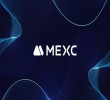7 November 2025
6 Web 3.0 Cryptos to watch out in 2022
The modern era of the internet has arrived, dubbed as “Web3”, all thanks to the Blockchain technology that supports Cryptocurrencies. Platforms like "Yahoo!" and "MSN Messenger" were among the most popular networks for searching and communicating during the early days of the internet's growth in the mid-90s, and were extensively utilized across the world- this perhaps was known as “Web1”. As time passed by, the internet became more widely used, and services such as Spotify and Instagram were developed in what is known as the “Web2” era of the internet. The term Web 3.0 is spoken a lot in the Crypto, Metaverse, Non-fungible Tokens (NFT), and decentralized finance (DeFi) communities during the last year.
Web 3.0 is the internet’s next iteration, with a focus on decentralization. Its goal is to provide a degree of transparency in which smart contracts, rather than centralized organizations, govern user data and transactions. However, automated transactions need the use of Cryptocurrency. These Web 3.0 coins and tokens are essentially decentralized projects that use smart contracts to automate transactions over the internet. Here is the list of the Top 6 Web 3.0 Cryptocurrencies to keep an eye on!
Also read: Why Is Web3 So Popular?
1. Helium (HNT-USD)
Many people consider internet access to be a basic human right, similar to healthcare or shelter, all because of the vast amount of data and connectivity it delivers. One of the most prominent Web 3.0 Cryptos is the Helium network. It's also the leading initiative to get the internet into the hands of each person. Helium provides an online service designed to compete with ISP giants like Verizon (NYSE: VZ) and AT&T (NYSE: T). It utilizes Blockchain technology in addition to physical hotspots to provide users with global access to wireless internet. For example, users can purchase hotspot hardware to keep in their apartments. When another Helium user wishes to access the internet outside the house, they may look for and connect to the hotspots. This mode of connecting is ideal for hardware owners. HNT coins are earned when someone connects to one hotspot. As a result, service providers are motivated to install hardware in high-traffic regions. Furthermore, by participating in the network and boosting its popularity, end users are paid more; as more validators and hotspot providers emerge, recognizing a lucrative potential in HNT, end-users have more hotspots via which to connect. Helium keeps up with what massive, centralized ISPs have to offer in order to expand its creative offers. To deliver the fastest connections possible, the network just launched a fleet of 5G-compatible hotspots.
2. Chainlink (LINK) :
Chainlink is an Ethereum-based decentralized Blockchain network. It utilizes an oracle network, which enables the Blockchain to connect with data stored off-chain (off the Blockchain), bridging the gap between traditional data and decentralized environment. In simple words, it supplies smart contracts with vital information that exists outside of the Blockchain. This allows smart contracts to collect data such as payments, temperature from a sensor, or even football game scores. The Chainlink network is made up of massive data providers and node operators that provide information to the Blockchain’s smart contracts. Users on the network can earn revenue in the Blockchain’s native token LINK by acting as node operators. With a market worth of more than $13 billion, it's now the most popular Web 3.0 coin.
3. BitTorrent (BTT) :
BitTorrent is a peer-to-peer (P2P) file-sharing system that was first introduced in 2001 by Bram Cohen, who is the founder of BitTorrent. In 2018, the TRON Blockchain bought BitTorrent. The BitTorrent Token (BTT) was created as a TRC-10 token on the Tron platform in 2019. The project's goal is to construct a token-based economy around BitTorrent’s networking, bandwidth, and storage capabilities. The BitTorrent File System is a user-supported decentralized file storage system. As per CoinMarketCap, BTT is the 54th most valuable Crypto by market capitalization of $2.4 billion, with a value of $0.002483 per coin, after reaching an all-time high of $0.01 in April 2021.
Also read:7 Best Ways To Invest In The Metaverse
4. Ocean Protocol (OCEAN) :
The Ocean Protocol is another protocol that provides all of the resources needed to develop a Web 3 solution. Its native token, OCEAN, is one of the greatest investments for individuals seeking Web 3.0 tokens with a lot of optimism. OCEAN has created the necessary tools for creating Web3 apps. The protocol aims to decentralize the notion of data sharing on the internet by providing access and transparency in data management. The Ocean Protocol is gaining a lot of popularity especially because the network is working on a Stablecoin that will be comparable to DAI. The goal of this Stablecoin is to offer stability to the Ocean Protocol and make the network expand even further. In the Web 3.0 data economy, the OCEAN protocol is well-known. It has a fast-increasing ecology, making it one of the best chances for 2022. With the rise of Web 3.0 and the future possibilities of this technology, the network, and its native token might see significant improvements and gains. Considering that this token has always been on a noticeable rise, its previous performance is also something to consider. If it proceeds to make significant progress, it might be on the verge of a much larger rise. Making it one of the Web 3.0 tokens you should consider investing in.
5. Kusama (KSM-USD)
Investing in Kusama is like investing in Polkadot in reverse. That’s because Kusama only appears as a Polkadot network companion. Its called a “canary chain” by the creators, from the classic metaphor of the ‘canary in the coal mine’. Consider it to be the picks and shovels of Web 3.0 development. Kusama was already up and operating with many projects before anything was auctioned off by the Polkadot network. That’s because the network is the barometer by which parachains are evaluated; it’s a kind of test drive for apps before they buy the automobile. Developers utilize Kusama to smooth out the flaws in their projects; Polkadot uses Kusama to smooth out its own issues before rollout. Projects compete for one of Kusama’s 100 parachains in the same way Polkadot does. Once a project has its own chain, it may utilize Kusama to practice before moving on to Polkadot. Users may use Kusama apps regularly, and creators can look for and correct any flaws or inconsistencies before continuing to Polkadot and its wider reach. Between the two options, Kusama may be the superior short-term bet because of its longer-running and more robust network. Polkadot, on the other hand, will undoubtedly catch up as it continues to have auctions and raise billions via crowdfunding. Regardless of whatever side of the coin one chooses, whether it's DOT or KSM, the structure of the two chains means you’re effectively investing in the success of both.
Also read: Top 7 Brands Exploring The Metaverse
6. Theta network (THETA) :
As per the CoinMarketCap, THETA is the 40th most valuable Crypto by Market cap of $4 billion, with a value of $4.01 per coin, after peaking at an all-time high of $14.28 in April 2021. Mitch Liu and Jieyi Long launched the project in 2017, and it is a decentralized video streaming platform that uses a network of hundreds of computers all over the world to stream high-quality video. Theta network, according to its official website, has major partners such as MGM, Lionsgate, and NASA, and plans to supply airdrops and an NFT-based video platform in 2022.
Disclaimer: The author’s thoughts and comments are solely for educational reasons and informative purposes only. They do not represent financial, investment, or other advice.






